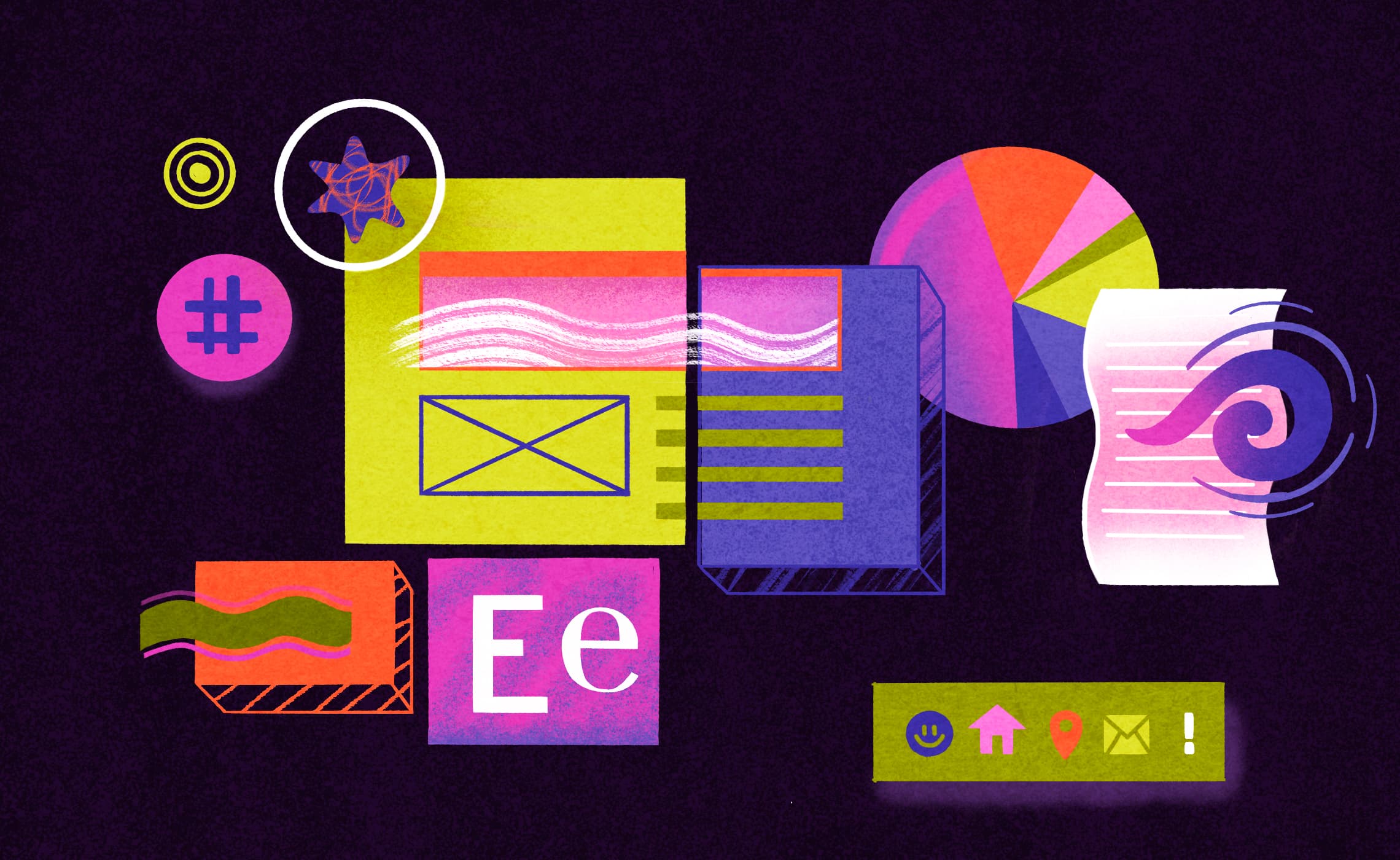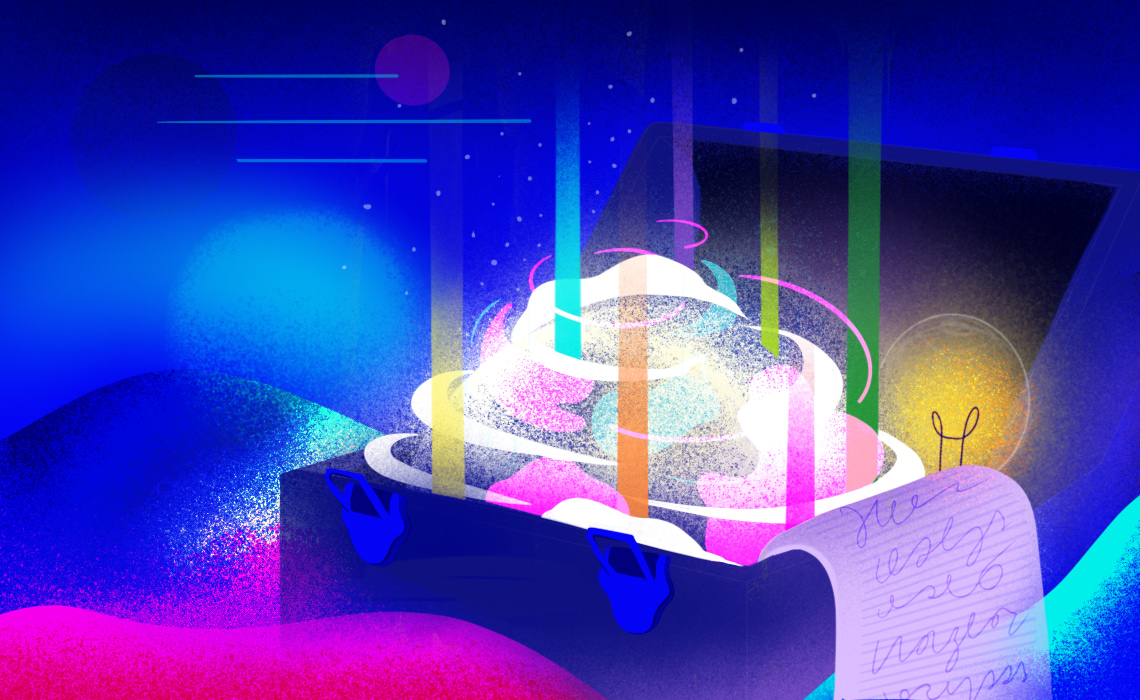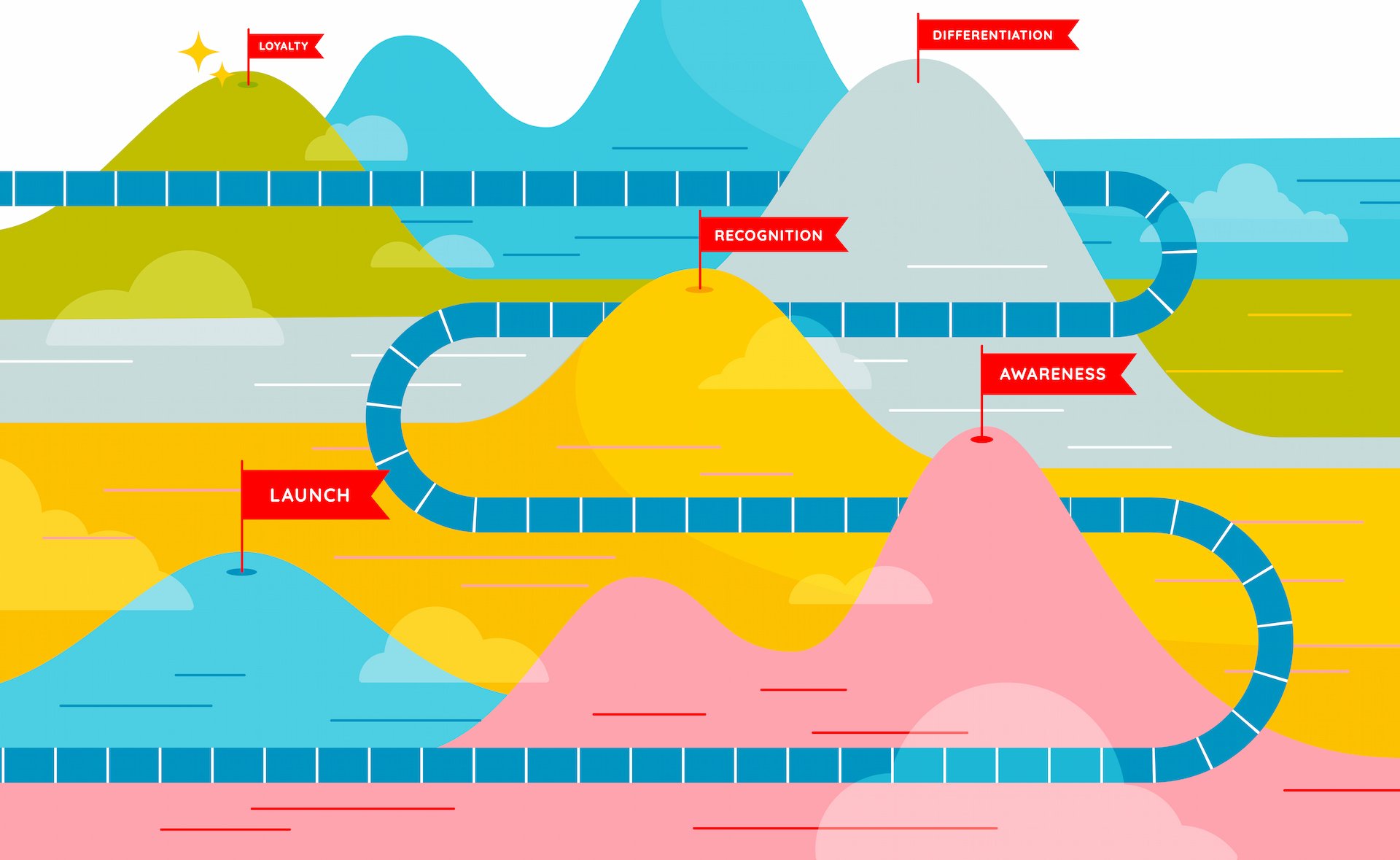Mastering Brand Systems: Your Guide to a Cohesive Brand Identity
Approx 7 min. read

Picture this: your brand is like that new kid at school trying to make an impression. You've got a cool logo, some fancy colors, maybe even a catchy tagline—but something's missing. That something? A brand system that ties it all together. It's your brand's way of saying "this is who I am" across every platform, every touchpoint. We're talking logos, fonts, colors, and tone—the whole enchilada that creates that unified vibe your audience can spot from a mile away. When you nail this system, your brand becomes that popular kid everyone recognizes in the hallway—cohesive, memorable, and totally crushing it.
Key Takeaways
- Think of a brand system as your brand's ultimate yearbook—it captures all your graphic design and UI/UX assets, making sure your identity stays on point across every channel and keeping both your internal team and external peeps on the same page.
- Just like the cool cliques need their defining elements, your brand system's key components—logos, typography, color palettes, and tone—must be crystal clear and consistently used if you want to build that ride-or-die relationship with your target audience.
- When you implement a rock-solid brand system, you're basically giving yourself a golden ticket—marketing materials flow faster, people recognize your brand across a crowded room, and ultimately, your sales and profits get that glow-up they deserve.
Understanding Brand Systems

At its heart, a brand system is like your brand's trapper keeper—an interactive kit that holds all those graphic design and UI/UX assets that make your brand uniquely you. It's the expanded view of your brand book, the whole design ecosystem wrapped up with a bow. Traditional branding is like only caring about what outfit you wear to school, focusing on what customers see. But a brand system? That's the complete package—the clothes, the attitude, the lingo, the whole vibe that creates a consistent experience everywhere people encounter you. It's the master toolkit your marketing squad and design crew can grab to make sure everything screams "us" and delivers on your brand's promise.
A well-crafted brand system isn't just for today's pop quiz—it's planning for prom and graduation and beyond. It elevates your brand by creating unity both behind the scenes and center stage, making it super easy for your team to create messaging that feels like it all belongs together. This unity helps establish your brand identity like that iconic table in the cafeteria that everyone recognizes instantly. It resonates with your target audience on a deeper level, amping up your overall strategy and helping introduce new brands to the market without that awkward new kid energy.
Key Components of a Brand System
A brand system is the sum of its parts, like the periodic table of your brand elements. These components include:
- Logos
- Typography
- Color palettes
- Tone and voice
Each element plays its role in defining your brand's identity—like members of the same band, they all need to hit the right notes to create harmony across every platform.
To achieve that cohesive identity, you need well-defined brand guidelines—think of them as the rulebook for your brand game. These guidelines spell out exactly how to use logos, colors, typography, and your overall brand personality. Collaborating with graphic designers is like teaming up with the art kids to create visually magnetic brand elements that stick in your audience's mind and make them come back for more.
Let's dig into the syllabus of each of these elements.
Logos and Iconography
Your logo is basically the "Hi, my name is" sticker of your brand. A well-designed logo condenses everything about your identity and services into one simple visual that speaks volumes. The best logos check all the boxes: simple, relevant, memorable, distinctive, scalable, and timeless. When you're developing a logo, you need to think about context—where will it hang out? How will it look plastered across different products? How will your clients actually use it in the wild?
Iconography is like your logo's crew—the set of visuals and symbols that roll with your brand's identity. These elements help users navigate through your apps and platforms without getting lost, making the whole experience smoother than a fresh jar of Skippy. When your iconography and artwork styles stay consistent, people start recognizing your brand from across the crowded digital cafeteria, strengthening that visual bond with your audience.
Typography and Fonts
Typography isn't just picking a pretty font—it's like choosing the accent your brand speaks with. Fonts can hit you in the feels just as hard as images and colors, making them a crucial part of your brand's outfit. Think about how brands like Airbnb, Old Navy, and Netflix rock their signature fonts—they've turned typography into a visual language all their own, showing just how powerful the right font choice can be.
Typography dictates how your layout flows and ensures your brand's look & feel stays consistent everywhere it appears. Having organized font hierarchies is like having the perfect playlist—crucial for keeping your brand's vibe uniform and your content readable, making everything you put out there more engaging and accessible for your audience.
Color Palettes
Color has serious star power in branding. Your primary and secondary palettes can boost brand recall like that one hit song everyone knows the words to. When you nail your color palettes, including your brand mark colors, consumers spot you instantly in a crowded marketplace.
Colors trigger specific emotions and associations—they're the mood ring of your brand, strengthening that connection with your target market. A well-thought-out color palette keeps your brand looking harmonious across all touchpoints, delivering the punch needed to make an impact.
Remember Ferrari red? Of course you do. That's the power of color when it comes to brand loyalty. The right colors can make your brand as iconic and coveted as those luxury wheels.
Tone and Voice
A consistent tone and voice across all your communications is like having the same personality whether you're in math class or at the mall—it shows integrity. This consistency reinforces what your brand promises and aligns with your audience's expectations. The verbal components of your brand should include a distinctive tone and messaging guidelines that resonate with your crowd.
When your tone and voice align with your brand's narrative, it solidifies your presence and makes you memorable and trustworthy. Whether you're chatting on social media, helping customers, or dropping marketing materials, a consistent tone ensures your brand speaks with one voice—not multiple personality disorder.
The Role of Design Systems in Brand Consistency

Design systems are the MVPs when it comes to keeping your brand identity on point across all platforms. They're like the detailed playbook for your brand team—a structured collection of interconnected components that support a cohesive identity and make the user experience smooth as butter. A unified brand design system creates a shared language for your designers and developers, enabling them to collaborate like they've been friends since kindergarten.
Centralizing all your design elements in one system lets you make quick adjustments while keeping your brand looking tight across platforms. It's like having one central closet for all your outfit pieces instead of scattering them across different rooms. Establishing a robust digital style guide is a non-negotiable if you want to maintain that brand consistency in the digital wild west.
Benefits of Implementing a Brand System
Implementing a brand system is like getting the ultimate glow-up for your business. First, it helps you establish a recognizable presence through consistent marketing materials—think of it as having a signature style that people instantly connect with you. A brand system gives you clear guidelines that help maintain control over your brand across different platforms, ensuring your identity stays intact no matter where it shows up.
A cohesive brand system supercharges your brand recognition, which can lead to more cha-ching in sales and fatter profits. The comprehensive documentation within a design system is basically the textbook that educates everyone on your team about maintaining those brand standards, helping different departments work together like they're all sitting at the same lunch table.
Plus, using a brand system saves you serious time and cash in the commercial world. It streamlines creating and updating marketing materials, making the whole process more efficient and less of a resource drain. It's like having a template for success that you can use over and over again.
Steps to Create an Effective Brand System
Creating an effective brand system starts with getting all your ducks in a row. The first step? Create a brand book that lays out all your brand's visual and verbal elements. This book becomes the foundation for organizing these elements into a coherent brand design system—think of it as the yearbook that captures your brand's entire personality.
Brand guidelines are your playbook for development. These guidelines should cover:
- Visual assets
- Typography
- Logos
- Color palettes
- Icons
- Branding voices
- Customer personas
Organizing these elements from day one is crucial for developing a brand that feels like a unified crew rather than random individuals who happen to share the same name.
Don't wait until you're the popular kid to implement professional processes—start early. Making system-building a habit ensures your brand develops consistently and helps you dodge those embarrassing identity crises down the road.
Case Study: Airbnb's Brand System
Airbnb's recent rebrand is like that student who aced the final exam—a perfect example of a well-organized brand system. The company created a brand design system to keep their identity in check, maintaining both flexibility and consistency across their diverse audiences. The 'Belo' logo has become their varsity jacket—a key symbol in their identity that represents belonging and is designed to be recognized everywhere.
Airbnb's design system spells out best practices aimed at squashing misunderstandings and bringing clarity to the table, ensuring their branding stays tight across all platforms. Before they rolled out their design system, Airbnb already knew how to rock essential elements like colors, fonts, and logos. This solid foundation let them build a comprehensive design system that supports their brand's promise and makes their digital experiences pop.
Maintaining and Evolving Your Brand System
Your brand system isn't a set-it-and-forget-it deal—it needs regular updates and some automation tools to stay fresh and efficient. Just like you wouldn't wear the same outfit from freshman year to senior year, regularly assessing your brand identity ensures it vibes with current market trends and what consumers are into. Keep tabs on what people are saying about your brand through surveys and social media to spot areas that need a tweak or two. Small updates to your brand visuals or messaging can keep things fresh while holding onto those core elements that make you, well, you.
Accessibility isn't just a buzzword—it's a critical aspect of brand design systems. Making sure your digital experiences are inclusive can expand your audience reach and make your brand more appealing overall. When you thoughtfully adapt your brand identity, you avoid alienating your loyal fans while still appealing to the new kids on the block.
Summary
Mastering brand systems is like finding your perfect table in the high school cafeteria—essential for creating an identity that's cohesive and unforgettable. When you understand what makes up a brand system and implement one that's well-designed, you ensure consistency and boost recognition. The perks of having a solid brand system are huge, from better teamwork and efficiency to fatter profits.
As we've seen with Airbnb, a well-organized brand system can effectively manage and enhance a brand's identity. Regularly maintaining and thoughtfully evolving your brand system keeps you relevant and resonating with your audience. Embrace the power of brand systems, and watch your brand become the popular kid everyone wants to hang with.
Frequently Asked Questions
What is a brand system?
A brand system is basically your brand's ultimate toolkit—it rolls up all your graphic design and UI/UX assets into one comprehensive package that defines your identity and keeps everything looking and feeling consistent across all platforms. It's like having your brand's DNA mapped out for everyone to follow.
Why is a brand system important?
A brand system is your brand's best friend—it ensures consistency and boosts recognition by making sure all your communications align with your identity and promise. This harmony strengthens your overall impact in the marketplace, like having a unified team instead of a bunch of random players.
What are the key components of a brand system?
Think of your brand system as a band where every member plays a crucial role—logos, typography, color palettes, and tone and voice all work together to create your cohesive brand identity. Each component hits a different note but together they create that signature sound that people recognize instantly.
How does a design system contribute to brand consistency?
A design system is like having one central closet for all your brand elements—it keeps everything organized and ensures that when changes happen, they happen everywhere at once. This structured collection of components helps maintain that unified look and feel that makes your brand instantly recognizable.
How can I maintain and evolve my brand system?
Keep your brand system fresh by regularly updating your visuals and messaging based on what your audience is telling you, while making sure everything is accessible and inclusive to widen your appeal. This approach ensures your brand stays relevant and engaging, without losing the core identity that makes people fall in love with you in the first place.
Related posts
Food for thought.

Primal Branding: The Who What When Where Why of Building Iconic Brands
by Brian Sena

Your Image Is Everything: Top Branding Do's and Don'ts
by Margaret Ziviski